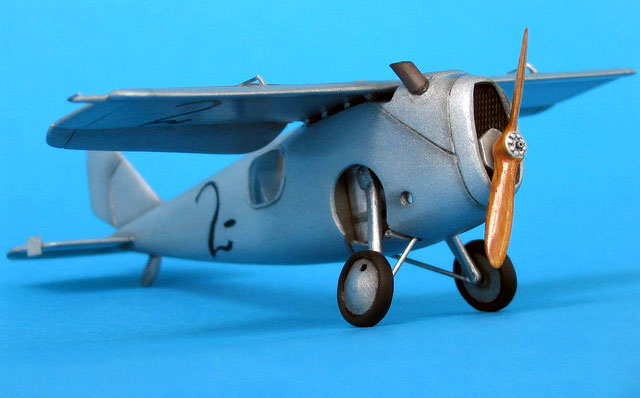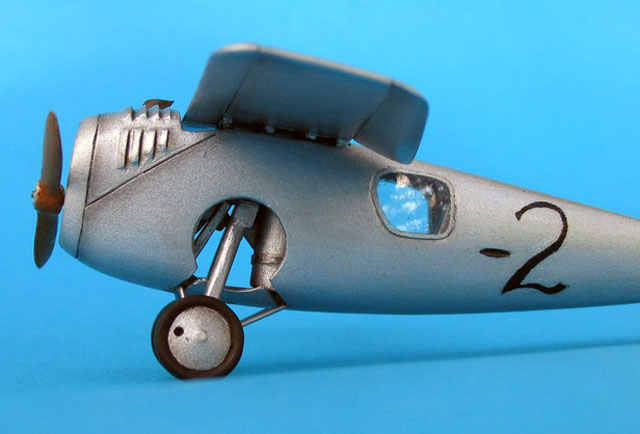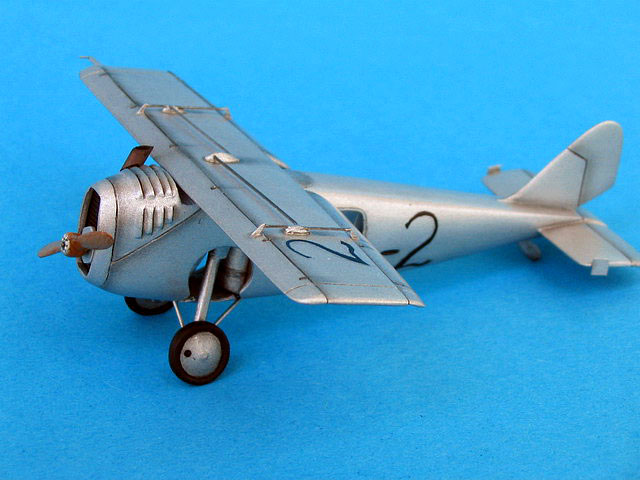|
Resin
copy of 12 Squared
1/72 scale
Dayton-Wright RB-1
by Piotr
Dmitruk
|
 |
|
Dayton-Wright RB-1 |

HyperScale is proudly
supported by Squadron.com
This aircraft was specially
prepared for James Gordon Bennett Aviation Cup in
1920, designed by Howard Max Rinehart (also the
pilot), and Milton C. Baumann, thus "RB" in the
racer's name.
Rineharts goal was to build an aircraft capable to
achieve 200MPH. Using model building techniques,
designed a wing made of a solid balsa core covered
with a veener. Front section of the wing acted as
flaps, rear acted also as ailerons. They were
interconnected together and cooperated with
retracting landing gear. As the gear was extended,
the flaps deflected down. All system was operated by
a crank in the center of the instrument panel and
took 12-20 seconds. The strength of the wing was
incredible. It amazed the French when two men sat on
it prior to the races, but in fact it would supprt
twelve men without deflecting.
The RB-1 used a Hall-Scott L-6a ("Liberty six")
engine of only 250HP.

A problem was a lack of directional stability. Prior
to the race Rinehart added two small end plates to
the horizontal stabilizer, but it doesn't solve the
problem, intensified by the lack of forward
visibility. Pilot entried to the cockpit through a
hatch on top of the fuselage or through one of the
two windows. These windows were flexible enough for
the pilot to bow them out with his head, thus
earning a bit of forward visibility.
20 minutes after the beginning of the race, Rinehart
dropped out due to the jammed flap, figuring he had
no chance. But if he had continued the race, he
would be at least second, due to mishaps that befell
other contestants. The cup was won by the French
Sadi Lacointe in Nieuport 29V at an average speed of
168,5 MPH, and just three days before race, Rinehart
flew at 165 MPH "throttled back".
It would be twenty years before the concept of
Dayton- Wright RB-1 would find a place in daily
aviation. The developments of the team that built
the RB-1 included the variable-camber wing, the
Delco ignition system, and development of tetraethyl
lead, increasing aircraft range, and leading to the
Octane rating system.
Today this aircraft sits in the Henry Ford Museum of
Transportation in Dearborn in rather poor condition.
Typical short run, needed
grinding, filling and polishing. I made up the
cockpit, made new windows, and new engine cooler.
This aircraft was painted with silver dope and
polished, so I painted the kit with Tamiya flat
silver paint, added shadows with pencil lead, and
covered with clear lacquer.

All decals were custom made.
Click
on the thumbnails below to view larger images:
Model, Images and Text Copyright
© 2006 by
Piotr
Dmitruk
Page Created 30 November, 2006
Last Updated
06 December, 2006
|
Home
| What's New |
Features |
Gallery |
Reviews |
Reference |
Forum |
Search